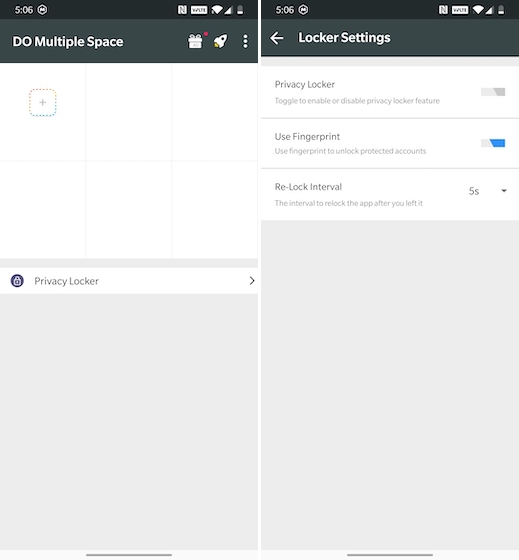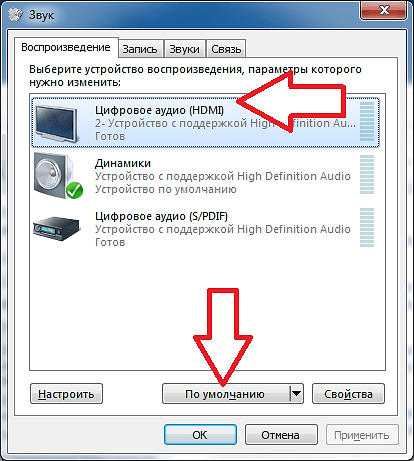Parallel Space is an app that allows you to run two instances of the same app on your Android smartphone. This is helpful if you want to use two accounts for one app on one device. Basically, you can clone and run multiple instances of the same app simultaneously. But over the years, Parallel Space has become bloated, and it now causes faster battery drain. Even with the screen off, it drains the battery in the background. So, if for this reason, or a reason of your own, you are looking for a replacement for Parallel Space, you have come to the right place. Here are the 5 best Parallel Space alternatives that you can use to manage multiple accounts of the same apps in 2020.
Note: OnePlus (Parallel Apps), Xiaomi (Dual Apps), Realme (Clone Apps), Vivo (App Clone), and Samsung (Dual Messenger) offer their own versions of app cloning feature. You can try it out before trying a third-party app if you want. Launch the Settings app, search for the feature by name and proceed from there.
Parallel Space Alternatives in 2020
Apps like Parallel Space are a boon for users who want to run multiple instances of the same app. For example, I use the cloning feature to run two WhatsApp accounts on the same phone. And since my phone supports Dual-SIM technology, I don’t have to carry an extra phone. Many people use such apps to create a hidden file system for their private files, while others use them to keep their work and private life separate. There are many use-cases, and you can be as creative with these apps as you want. With that said, let’s get to our list, shall we?
1. DO Multiple Accounts
One of the best app cloning app that can replace Parallel Space for you is “DO Multiple Accounts”. The USP of this app is that it allows you to create more than two spaces. That means if you want, you can run three instances of the same app. Whether you want to create multiple accounts for your favorite chat application or run multiple instances of social media accounts like Facebook, this app will let you do that. I also love that the app gives you notification control over the cloned apps. So, if you want to keep an app private, you can disable notifications for that app.

It also brings a built-in privacy locker that lets you hide the cloned apps behind a password. The app is also light on resources so it doesn’t drain the battery as quickly as Parallel Space. Other features include support for Google Play Services, multiple game accounts, one-tap swathing between spaces, and more. DO Multiple Accounts is good, and it’s one of the best Parallel Space alternatives that you can use right now.
Install: Free, in-app purchases
2. Clone App
Clone App is another good Parallel Space alternative that you can use to clone apps. The best thing about this app, apart from its primary function, is that it doesn’t show any ads. Even if you are using the free version, there are no ads to spoil your experience. Like Parallel Space, you can use this app to clone apps to manage multiple accounts on the same phone. I also love that it brings special support for WhatsApp and allows you to use colorful skins.

The app supports both 32-bit and 64-bit apps, so no apps are left behind. It comes with a built-in VPN for enhanced privacy. That being said, the VPN is not that good, you will be better off using any one of the dedicated free VPN apps. Other features of the app include, support for space themes, emoticons, and more. This is a good app for cloning your chat and social media application. Note that in my testing, it didn’t work well with games.
Install: Free, in-app purchases
3. Island
Island, while still in “Early Access” is a capable app that can replace Parallel Space for you. It’s developed by Oasis Feng, who is also the developer of Greenify (free), a popular power and resource management app for Android. The developer is known for his stance on privacy, so you can be assured that your data will be safe. Talking about the features, Island brings most of the features that you can expect from an app cloning app. You can isolate apps for privacy protection, clone apps for running multiple accounts, and freeze apps to completely block their background behaviors.

Using these features, you can run multiple instances of the same apps, safeguard your data, and ensure that power-hungry apps don’t eat your battery. The app uses the built-in work profile feature of Android to create a space for you. So, you will miss out on the password protection feature to hide the cloned apps. You can hide the apps, but you cannot put them behind a vault. Anyway, you can also use an app locking app to create a vault yourself if you need to have it. Apart from that, it’s best for running cloned apps while maintaining data privacy.
4. Dual Apps
Dual Apps is a popular app cloning app that you can use to run manage multiple accounts of the same on your Android device. The app promises to bring enhanced privacy and runs clone apps without leaving a trace on your primary space. You can also use it to make your space private and hidden. That means only you will be able to access that space. Apart from social accounts, the app also supports the cloning of gaming apps with support Play Store services. When you use this app, both the accounts will remain online all the time. You can also choose to hide notifications of the hidden apps, thus furthering the privacy of your apps. Overall, it looks like a good Parallel Space alternative, and you should try it out.

Install: Free with ads
5. Shelter
If you don’t trust private companies with your data and want an open-source Android app to replace Parallel Space, you should download Shelter. Shelter is a free and open-source app that leverages the “Work Profile” feature of Android to provide an isolated space where you can install cloned apps. This is a great app for people who want enhanced privacy. Using this, you can run all the data collecting apps like Facebook in a container, where they cannot access your data outside your profile.

Of course, you can also use it to clone apps and manage multiple accounts. One of my favorite features of this app is that it allows you to freeze background-heavy or seldom-used apps when you don’t need them. Not only it’s good for privacy but it also means that the cloned apps won’t drain the battery too quickly. That being said, remember that like Island, you will not be able to hide cloned apps behind a password protected vault with Shelter. You will get all the other benefits of using a FOSS app. The app is free, there are no ads, and there is no tracking. If you want to ensure your data privacy, you should use this app.
Note: Since it works using the native work profile on Android, it might crash on those Android Custom ROMs that have broken implementation of the work profile feature.
Clone Apps and Manage Multiple Accounts
Those are the five best Parallel Space alternatives apps that you can use to manage multiple accounts of the same on your Android smartphone. If you are privacy conscious, I suggest you try either Shelter or Island. Note that you will not be able to hide the cloned apps behind a vault if you use these apps. So, if you want more features, DO Multiple Accounts and others on this list are a good option for you. Check them out and let us know which one worked for you the best.
1 COMMENT
- Naman Bansal Sep 13, 2020 At 3:03 pm
Hey, Island does not allow multiple accounts as of right now. It also allows me to have two accounts. If I’m wrong, please let me k ow as to how can I have multiple accounts using this app.
6 Best Open Source Alternatives to Microsoft Office for Linux
Last updated October 1, 2020 By Abhishek Prakash 57 Comments
Brief: Looking for Microsoft Office in Linux? Here are the best free and open source alternatives to Microsoft Office for Linux.
Office Suites are a mandatory part of any operating system. It is difficult to imagine using a desktop OS without office software. While Windows has MS Office Suite and Mac OS X has its own iWork apart from lots of other Office Suites especially meant for these OS, Linux too has some arrows in its quiver.
In this article, I list the best Microsoft Office alternatives for Linux.
Best open source alternatives to Microsoft Office for Linux

Before we see the MS Office alternatives, let’s first see what you look for in a decent office suite:
- Word processor
- Spreadsheet
- Presentation
I know that Microsoft Office offers a lot more than these three tools but in reality, you would be using these three tools most of the time. It’s not that open source office suites are restricted to have only these three products. Some of them offer additional tools as well but our focus would be on the above-mentioned tools.
Let’s see what office suits for Linux have we got here:
6. Apache OpenOffice

Apache OpenOffice or simply OpenOffice has a history of name/owner change. It was born as Star Office in 1999 by Sun Microsystems which later renamed it as OpenOffice to pit it against MS Office as a free and open source alternative. When Oracle bought Sun in 2010, it discontinued the development of OpenOffice after a year. And finally it was Apache who supported it and it is now known as Apache OpenOffice.
Apache OpenOffice is available for a number of platforms that includes Linux, Windows, Mac OS X, Unix, BSD. It also includes support for MS Office files apart from its own OpenDocument format. The office suite contains the following applications: Writer, Calc, Impress, Base, Draw, Math.
Installing OpenOffice is a pain as it doesn’t provide a decent installer. Also, there are rumors that OpenOffice development might have been stalled. These two are the main reasons why I wouldn’t recommend it. I listed it here more for historical purposes.
5. Feng Office

Feng Office was previously known as OpenGoo. It is not your regular office suite. It is entirely focused on being an online office suite like Google Docs. In other words, it’s an open source collaboration platform.
There is no desktop version available so if you are looking to using it on a single Linux desktop, you are out of luck here. On the other hand, if you have a small business, an institution or some other organization, you may try to deploy it on the local server.
4. Siag Office

Siag is an extremely lightweight office suite for Unix-Like systems that can be run on a 16 MB system. Since it is very light-weight, it lacks many of the features that are found in a standard office suite. But small is beautiful, ain’t it? It has all the necessary function of an office suite that could “just work” on lightweight Linux distributions. It comes by default in Damn Small Linux.
3. Calligra Suite

Calligra, previously known as KOffice, is the default Office suite in KDE. It is available for Linux and FreeBSD system with support for Mac OS X and Windows. It was also launched for Android. but unfortunately, it’s not available for Android anymore. It has all the application needed for an office suite along with some extra applications such as Flow for flow charts and Plane for project management.
Calligra has generated quite a noise after their recent developments and it may be seen as an alternative to LibreOffice.
2. ONLYOFFICE

Relatively a new player in the market, ONLYOFFICE is an office suite more focused on the collaborative part. Enterprises (and even individuals) can deploy it on their own server to have a Google Docs like collaborative office suite.
Don’t worry. You don’t have to bother about installing it on a server. There is a free and open source desktop version of ONLYOFFICE. You can even get .deb and .rpm binaries to easily install it on your desktop Linux system.
1. LibreOffice

When Oracle decided to discontinue the development of OpenOffice, it was The Document Foundation who forked it and gave us what is known as Libre-Office. Since then a number of Linux distributions have replaced OpenOffice for LibreOffice as their default office application.
It is available for Linux, Windows and Mac OS X which makes it easy to use in a cross-platform environment. Same as Apache OpenOffice, this too includes support for MS Office files apart from its own OpenDocument format. It also contains the same applications as Apache OpenOffice.
You can also use LibreOffice as a collaborative platform using Collabora Online. Basically, LibreOffice is a complete package and undoubtedly the best Microsoft Office alternative for Linux, Windows and macOS.
What do you think?
I hope these Open Source alternatives to Microsoft Office saves your money. Which open source productivity suite do you use?
Like what you read? Please share it with others.
6 Best Open Source Alternatives to Microsoft Office for Linux
Last updated October 1, 2020 By Abhishek Prakash 57 Comments
Brief: Looking for Microsoft Office in Linux? Here are the best free and open source alternatives to Microsoft Office for Linux.
Office Suites are a mandatory part of any operating system. It is difficult to imagine using a desktop OS without office software. While Windows has MS Office Suite and Mac OS X has its own iWork apart from lots of other Office Suites especially meant for these OS, Linux too has some arrows in its quiver.
In this article, I list the best Microsoft Office alternatives for Linux.
Best open source alternatives to Microsoft Office for Linux

Before we see the MS Office alternatives, let’s first see what you look for in a decent office suite:
- Word processor
- Spreadsheet
- Presentation
I know that Microsoft Office offers a lot more than these three tools but in reality, you would be using these three tools most of the time. It’s not that open source office suites are restricted to have only these three products. Some of them offer additional tools as well but our focus would be on the above-mentioned tools.
Let’s see what office suits for Linux have we got here:
6. Apache OpenOffice

Apache OpenOffice or simply OpenOffice has a history of name/owner change. It was born as Star Office in 1999 by Sun Microsystems which later renamed it as OpenOffice to pit it against MS Office as a free and open source alternative. When Oracle bought Sun in 2010, it discontinued the development of OpenOffice after a year. And finally it was Apache who supported it and it is now known as Apache OpenOffice.
Apache OpenOffice is available for a number of platforms that includes Linux, Windows, Mac OS X, Unix, BSD. It also includes support for MS Office files apart from its own OpenDocument format. The office suite contains the following applications: Writer, Calc, Impress, Base, Draw, Math.
Installing OpenOffice is a pain as it doesn’t provide a decent installer. Also, there are rumors that OpenOffice development might have been stalled. These two are the main reasons why I wouldn’t recommend it. I listed it here more for historical purposes.
5. Feng Office

Feng Office was previously known as OpenGoo. It is not your regular office suite. It is entirely focused on being an online office suite like Google Docs. In other words, it’s an open source collaboration platform.
There is no desktop version available so if you are looking to using it on a single Linux desktop, you are out of luck here. On the other hand, if you have a small business, an institution or some other organization, you may try to deploy it on the local server.
4. Siag Office

Siag is an extremely lightweight office suite for Unix-Like systems that can be run on a 16 MB system. Since it is very light-weight, it lacks many of the features that are found in a standard office suite. But small is beautiful, ain’t it? It has all the necessary function of an office suite that could “just work” on lightweight Linux distributions. It comes by default in Damn Small Linux.
3. Calligra Suite

Calligra, previously known as KOffice, is the default Office suite in KDE. It is available for Linux and FreeBSD system with support for Mac OS X and Windows. It was also launched for Android. but unfortunately, it’s not available for Android anymore. It has all the application needed for an office suite along with some extra applications such as Flow for flow charts and Plane for project management.
Calligra has generated quite a noise after their recent developments and it may be seen as an alternative to LibreOffice.
2. ONLYOFFICE

Relatively a new player in the market, ONLYOFFICE is an office suite more focused on the collaborative part. Enterprises (and even individuals) can deploy it on their own server to have a Google Docs like collaborative office suite.
Don’t worry. You don’t have to bother about installing it on a server. There is a free and open source desktop version of ONLYOFFICE. You can even get .deb and .rpm binaries to easily install it on your desktop Linux system.
1. LibreOffice

When Oracle decided to discontinue the development of OpenOffice, it was The Document Foundation who forked it and gave us what is known as Libre-Office. Since then a number of Linux distributions have replaced OpenOffice for LibreOffice as their default office application.
It is available for Linux, Windows and Mac OS X which makes it easy to use in a cross-platform environment. Same as Apache OpenOffice, this too includes support for MS Office files apart from its own OpenDocument format. It also contains the same applications as Apache OpenOffice.
You can also use LibreOffice as a collaborative platform using Collabora Online. Basically, LibreOffice is a complete package and undoubtedly the best Microsoft Office alternative for Linux, Windows and macOS.
What do you think?
I hope these Open Source alternatives to Microsoft Office saves your money. Which open source productivity suite do you use?
Like what you read? Please share it with others.
How to Become a Successful Ninja Warrior (Ultimate Training Guide)
By Niklas Weber | Last Updated 05/05/2020
What makes a successful Ninja Warrior? Why are climbers and parkour athletes so successful in the Ninja Warrior competitions? What skills and which muscles did they properly train? All of this I’m going to show you in the following Ninja Warrior training guide, so that you will become a successful Ninja Warrior and can compete with all the Ninja Warriors out there.

The Ninja Warrior training areas you should focus on
Ninja Warriors need first and foremost a lot of upper body strength and endurance, explosiveness, and great grip strength. As an optimal weight-to-strength ratio is also essential, it doesn’t make sense just heading to the gym, lifting some weights, and becoming bulky.
Instead, you should concentrate on becoming like a monkey that can easily swing from branch to branch. To get a functional and athletic body, this needs you to focus on the following aspects:
Advanced climbers and parkours athletes have naturally trained most of these disciplines and thus are performing so well in the Ninja Warriors seasons. That’s why I strongly recommend bouldering.
But, let’s dive a bit deeper into the single training aspects.
Brachiate
You need to become good at swinging like a monkey. If you are not used to such a movement pattern, this might need you to train it on specific brachiate obstacles. You will get a feeling for how to generate momentum with your own body weight and swing further and higher with less effort.
Ninja Warrior and parkour gym are likely to have such obstacles. Some bouldering and climbing gyms have them as well, nowadays. So check them out and get used to swinging.
Lache
Lache training is a must for Ninja Warrior. There are many obstacles, where you hang and have to jump to another obstacle or a platform with a swing motion. You should know how to generate momentum efficiently and get a feeling for how much momentum is needed for a certain distance.
Grip strength
You should be able to hold your overall weight with one hand, as “monkey swinging” and hanging will become an essential skill. Buy some grip strength trainers, a hangboard, and a pull-up bar with various holds, or gymnastic rings, boulder 2 two 3 times a week, and use a towel for doing pull-ups.

Use the grip strength trainers multiple times a week, if not daily. You can use them while sitting at your computer, watching TV, or reading some stuff. Cycle between different strength trainers to get the optimum out of this training.
Now to the hangboard: You will love it! It will give you a major boost in grip strength, even though you may already be bouldering several times a week.
If you want to dive deeper into how to boost your grip strength, then have a look at:
Explosive upper body strength
Explosive upper body strength is what most people in the gym are missing, as they typically perform weight lifting exercises in a slow and controlled way. Unfortunately, it’s crucial for some of the Ninja Warrior obstacles. The salmon ladder is probably the best-known example.
So, add explosive movements on the pull-up bar, such as Clapping Pull Ups, and workouts on a campus board to your training regime. Start with laddering, which means climbing up the rungs in the simplest way. Once you are comfortable with that, you can try dynamic movements, and “jump” from one rung to another with both hands at the same time. This will bring you a lot of explosiveness. If that’s too easy, take two or even three rungs at once. You can find campus boards in almost any bouldering gym.
Read more about on how to improve upper body strength with pull-ups in the following article:
And if you want to give your strength a further boost with blood flow restriction training (BFR), also called occlusion training or KAATSU training, check out:
Always try maintaining muscular balance to avoid serious health issues. Train your chest and shoulders as well. When climbing or bouldering a lot, it’s important to add some rotator cuff exercises to your weekly workout.
Get a Free Copy of the Pull-Up Performance Guide
You are almost there! Just join the newsletter with your email below and get instant access to that guide.
Core strength
Well trained core muscles will give you balance and stability, reduce the risk of injury, and ease a lot of Ninja Warrior obstacles. Every time you are hanging on an obstacle and have to generate a swing, you will need your core. With a great core, your swinging will be much more efficient.
Bouldering will improve your core strength. In addition to bouldering, you should do a lot of core exercises on a pull-up bar or gymnastic rings, such as Toes to Bar, Hanging L-Sit, or Windshield Wipers. That way, you can train your upper body at the same time.
Balance and precision
Most preliminaries and often the first two stages of the Ninja Warrior competition feature at least one obstacle which requires a great balance and precise foot placements. Training your footwork, coordination, and balance is, therefore, a vital part of a Ninja Warrior training.
Balance boards, Bosu balls, slackline training, and precision jumps would be the way to go. Often, bouldering and climbing gyms have slacklines. If you are a member of such a gym, use them while resting between your climbs.
Even some simple tools, like a few wooden beams placed in a row with a certain gap or multiple foam rolls parallel to each other, can be used to train your balance and foot placement. Just try to move them as little as possible when running across them.
I also recommend taking some parkour classes. Parkour teaches you how to get over and through obstacles in a smoothly. Precision jumps and balance are some of the major elements of this sport.
Obstacle training
Well, practice makes perfect. Either you have access to Ninja Warrior obstacles in your bouldering or Ninja Warrior gym, or you can build some of these on your own. Finding blueprints online is nowadays really easy. Pinterest is a good place to look them up.
Don’t forget to train on trampolines as well. There are some obstacles in the Ninja Warrior course that require you to use a trampoline. The jumping spider and the salmon ladder are often prominent examples. Even if using such a trampoline sounds simple, candidates screw them up all the time. Make sure, that you won’t be on that list!
Check out my guide to Ninja Warrior obstacles to see tips and tutorials for some of the most challenging obstacles:

Also, have a look at the Ninja Warrior Gyms directory to see if a suitable training facility is nearby. I have currently listed gyms in Australia, Canada, Germany, France, Netherlands, Portugal, Spain, Sweden, and the United Kingdom and will add gyms in the United States little by little.
In case you struggle with slipping on obstacles, such as the Spider Wall or the Hanging Doors, then you are certainly wearing the wrong shoes and my article about the best Ninja Warrior shoes can be of help.
Stamina
Well-trained stamina is also highly important on a Ninja Warrior course. With multiple obstacles in a row and only short breaks in between your heartrate can spike to the roof. If your body can’t recover fast enough between those obstacles and your muscles are only used to short activities, they might fail over time.
Training multiple obstacles with no rest in between is a great way to adapt to this kind of physical stress. Some Ninja Warriors also elevate their heartrate intentionally before such training by performing some sprints or similar exercises.
I also recommend some traverse climbing in a climbing gym to train your forearm endurance.
How to start with your Ninja Warrior training
Most of the previously discussed aspects can be trained by going to a bouldering gym on a regular basis. So, if you aren’t already a member of a bouldering gym, become one! You will see great gains when training there. Bouldering is by far the best cross-training for most of the Ninja Warrior obstacles. Not only does it improve your upper body and core strength, but the various holds will also enhance your grip. And you will learn how to solve problems with limited stamina.
In case you are now heading to a bouldering gym, read my article about using climbing chalk for improving your grip:
If you are already well-trained and have access to a Ninja Warrior gym, it’s even better than a bouldering gym, but not necessary. I recommend a Ninja Warrior gym at least for practicing the obstacles and training your muscle memory.

General training tips
Be prepared to train 5-6 times a week, but do not overtrain. Keep at least 1 day per week for rest. Don’t risk injuries like muscle tears and tendon inflammations due to overtraining. If you feel pain somewhere, take some time to recover. You surely don’t want to have longer setbacks in your training.
Set yourself small and incremental goals. This way you will stay motivated and have lots of successes to celebrate.
Before each workout, warm up and do some dynamic stretching of your whole body, but especially the upper part to minimize the risk for injury. Do this for at least 10 minutes.
Use foam rolling and deep tissue massage for further enhancing your flexibility and loosening tight muscles. The Rolflex PRO is one of the best tools for this, besides the Armaid.
Check out my recommended Ninja Warrior equipment, i f you want to know more about the tools I use almost daily.
Eat the right stuff
Eating right is as important as doing the right exercises. You want to build up muscles, but don’t build up fat. Getting lean and improving your strength-to-weight ratio must be your goal. Any fat you are carrying while hanging on some obstacles will deplete your stamina unnecessarily.
The lighter you can get while building up muscles at the same time, the better your performance will be. For some, this means dieting while training. Make sure to digest plenty of protein for muscle development if that’s the case.
If you want to optimize your nutrition further, check out:
Hello, I’m Darren
I design and build beautiful websites and web apps using WordPress and React.
I’m a freelance web developer specialising in WordPress and WooCommerce websites. I also use JavaScript, React and TypeScript to build web and mobile applications.
- I’m available for freelance and contract work remotely from my office.
- I design and build beautiful, easy to use websites, with complex features. I can help with every stage, from planning, development, through to testing and delivery.
- I also maintain existing websites. I can perform a health check on your site, solve any issues and put together a plan to ensure new features are planned and delivered.
WordPress consultant
I help business of all sizes determine what they need from their website. I help select the best technology and approaches needed to achieve that website. I design and build that website ensuring it delivers everything required.
Support, monitoring and future improvements are all part of the package I offer to ensure websites stay online and secure.
I can provide integration and data migration between all of your systems. I can provide all contact with your technical partners.
I also take on the maintenance of existing websites.
Agencies and designers
My core skills are: WordPress, WooCommerce, PHP, JavaScript, Node.js, React, Redux, React Native, Expo, HTML5, CSS3, SASS, LESS, Gulp, Grunt, webpack, responsive, Bootstrap, jQuery, Ajax, REST, JSON, XML, data migration, CRM integration, form generation, data capture, payment integration (PayPal and Stripe), PDF generation, GitHub, BitBucket, database design, SQL, SEO.
Within WordPress I have extensive experience of theme and plugin development, WooCommerce, Advanced Custom Fields, Visual Composer and Multisite.
As a JavaScript developer I use Node.js as the backend, and React and Redux on the frontend. I also use Expo, React Native and Node.js to create mobile applications for iOS and Android.
I believe WordPress is the best website management tool available for small to medium sized websites. It’s intuitive and easy to use, making it perfect for websites where content is regularly added and updated. WordPress is highly adaptable and can be used to generated websites of all kinds.
I’m a WordPress expert, having worked with hundreds of different websites. I create entire websites for customers, create themes and plugins for designers, widgets and more. I can audit your WordPress site to make recommendations for performance and security. I’ve been working with WordPress for 11 years, and am a core contributor.
WooCommerce is the best ecommerce solution for WordPress. Allowing you to sell online, and manage content easily with WordPress.
Using WooCommerce, I create easy-to-use and powerful online stores. You can easily manage the products in the store yourself, as well as manage stock and run sales reports.
I customise WooCommerce to match business needs, including custom layouts, stock processing, multi-buy deals, and more.
I have extensive JavaScript experience covering front end and back end development.
I prefer using React for web front end, React Native for mobile apps, and Node.js on the backend.
I’m a huge fan of TypeScript and insist on using it for all new projects.
I’ve used jQuery extensively in the past, especially with WordPress.

I’m a very experienced PHP developer, having worked on hundreds of different applications and websites during my career.
I have created large, complex web applications, as well as small, beautiful websites. I have experience of CodeIgniter, Laravel, Smarty, MySql, MongoDB and more.
I’m excellent and integrating with other systems, and importing data from external sources.
Some of my recent work

Spit Spreads Death – Mütter Museum

Liberty Human Rights

Own Art


Bloodyminded

More about me
I’m a senior developer, currently working on websites and web applications. My 18 year career has covered may different technologies and sectors, including Windows and iOS development, Oracle and more. My national clients include ITV, BBC, National Trust, TNT, Unilever, NHS and Pepsi. My Brighton based clients include Do Something Different, Blast Theory, Spectrum Photographic, SAS Graphics and L&S Printing.
I do the hard work, so that the your website is easy to use. You don’t need to worry about resizing images, HTML or any technical jargon. You just upload an image, and write the words that are important to your business. I make sure its presented beautifully.
I now specialise in WordPress and React, but have diverse experience of PHP, SQL, Drupal, Expression Engine, Magento and more.
I can solve your website hosting or performance issues. I can solve performance problems with your website, and move your website to a reliable and cost effective hosting provider with minimal downtime.
I’m passionate about using technology to make life easier, with years of experience using PHP, HTML, CSS, JavaScript, jQuery, MySQL, XML, Bootstrap, Ajax, OOP, Responsive web design, Accessibility, LAMP.
I use a few tools to make life much easier, including BitBucket, SourceTree, GitHub, Trello and BugHerd.
I am expert at integrating Google Analytics (including server-side events) and Google Adsense.
In recent projects I have developed WordPress PDF generation, REST and SOAP communications and Microsoft Dynamics CRM integration for an events system. I’ve also integrated Stripe payments and donations with Gift Aid compliance for a large charity.
I have excellent customer facing skills and am a great team member.
I hold a Honours degree in Computer Science, and love the outdoors.









